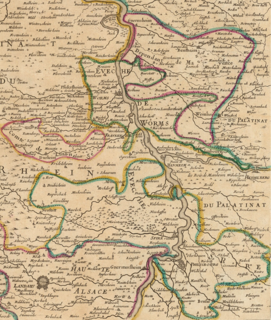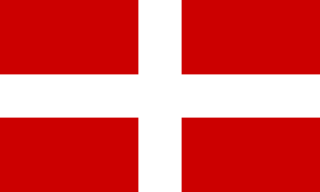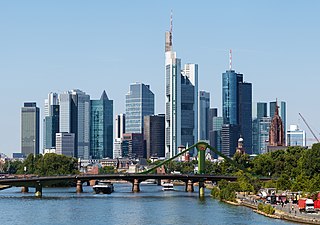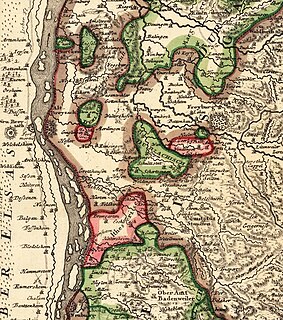 W
WThe Upper Rhenish Circle was an Imperial Circle of the Holy Roman Empire established in 1500 on the territory of the former Duchy of Upper Lorraine and large parts of Rhenish Franconia including the Swabian Alsace region and the Burgundian duchy of Savoy.
 W
WThe County of Bar, later Duchy of Bar, was a principality of the Holy Roman Empire encompassing the pays de Barrois and centred on the city of Bar-le-Duc. It was held by the House of Montbéliard from the 11th century. Part of the county, the so-called Barrois mouvant, became a fief of the Kingdom of France in 1301 and was elevated to a duchy in 1354. The Barrois non-mouvant remained a part of the Empire. From 1480, it was united to the imperial Duchy of Lorraine.
 W
WThe Diocese of Basel is a Roman Catholic diocese in Switzerland.
 W
WJakob Christoph Blarer von Wartensee was a Bishop of Basel and a leader in the Counter-Reformation in the region around Basel.
 W
WThe beginning of the succession of bishops of Basel is shrouded in legend. The first, St. Pantalus, eludes historical documentation. He is supposed to have been martyred at Cologne with Saint Ursula, who is herself difficult to locate historically.
 W
WThe Diocese of Fulda is a Roman Catholic diocese in the north of the German state of Hessen. It is a suffragan diocese of the Archdiocese of Paderborn. The bishop's seat is in Fulda Cathedral.
 W
WThe Prince-Bishopric of Worms, was an ecclesiastical principality of the Holy Roman Empire. Located on both banks of the Rhine around Worms just north of the union of that river with the Neckar, it was largely surrounded by the Electorate of the Palatinate. Worms had been the seat of a bishop from Roman times. From the High Middle Ages on, the prince-bishops' secular jurisdiction no longer included the city of Worms, which was an Imperial Free City and which became officially Protestant during the Reformation. The prince-bishops however retained jurisdiction over the Cathedral of Worms inside the city.
 W
WLeiningen is the name of an old German noble family whose lands lay principally in Alsace, Lorraine and the Palatinate. Various branches of this family developed over the centuries and ruled counties with Imperial immediacy.
 W
WFrom 1416 to 1847, the Duchy of Savoy was a country in Western Europe. It was created when Sigismund, King of the Romans, raised the County of Savoy into a duchy for Amadeus VIII. The duchy was an Imperial fief, subject of the Holy Roman Empire with a vote in the Imperial Diet. From the 16th century, Savoy belonged to the Upper Rhenish Circle. Throughout its history, it was ruled by the House of Savoy and formed a part of the larger Savoyard state, which in 1720 became the Kingdom of Sardinia.
 W
WFrankfurt is a metropolis and the largest city of the German state of Hesse. Its 763,380 inhabitants as of December 31, 2019 make it the fifth-largest city in Germany. On the River Main, it forms a continuous conurbation with the neighbouring city of Offenbach am Main and its urban area has a population of 2.3 million. The city is at the centre of the larger Rhine-Main Metropolitan Region, which has a population of 5.5 million and is Germany's second-largest metropolitan region after the Rhine-Ruhr Region. Frankfurt's central business district lies about 90 km (56 mi) northwest of the geographic centre of the EU at Gadheim, Lower Franconia. Like France and Franconia, the city is named after the Franks. Frankfurt is the largest city in the Rhine Franconian dialect area.
 W
WThe Landgraviate of Hesse-Darmstadt was a State of the Holy Roman Empire, ruled by a younger branch of the House of Hesse. It was formed in 1567 following the division of the Landgraviate of Hesse between the four sons of Landgrave Philip I.
 W
WHesse-Homburg was formed into a separate landgraviate in 1622 by the landgrave of Hesse-Darmstadt; it was to be ruled by his son, although it did not become independent of Hesse-Darmstadt until 1668.
 W
WThe Electorate of Hesse, also known as Hesse-Kassel or Kurhessen, was a landgraviate whose prince was given the right to elect the Emperor by Napoleon. When the Holy Roman Empire was abolished in 1806, its prince, William I, chose to retain the title of Elector, even though there was no longer an Emperor to elect. In 1807, with the Treaties of Tilsit, the area was annexed to the Kingdom of Westphalia, but in 1814, the Congress of Vienna restored the electorate.
 W
WThe Landgraviate of Hesse was a principality of the Holy Roman Empire. It existed as a single entity from 1264 to 1567, when it was divided among the sons of Philip I, Landgrave of Hesse.
 W
WIsenburg was a region of Germany located in southern present-day Hesse, located in territories north and south of Frankfurt. The states of Isenburg emerged from the Niederlahngau, which partitioned in 1137 into Isenburg-Isenburg and Isenburg-Limburg-Covern. These countships were partitioned between themselves many times over the next 700 years.
 W
WThe County of Kriechingen was a state of the Holy Roman Empire. It was originally a part of the Duchy of Lorraine, and was raised to an imperial estate in 1617. It belonged to the Upper Rhenish Circle. In 1697, Kriechingen was inherited by the Principality of East Frisia, and later by the County of Wied-Runkel. In 1793 Kriechingen was occupied by France; this was recognized by the Holy Roman Empire in the Treaty of Lunéville of 1801.
 W
WThe Duchy of Lorraine, originally Upper Lorraine, was a duchy now included in the larger present-day region of Lorraine in northeastern France. Its capital was Nancy.
 W
WThe Prince-Bishopric of Basel was an ecclesiastical principality within the Holy Roman Empire, ruled from 1032 by prince-bishops with their seat at Basel, and from 1528 until 1792 at Porrentruy, and thereafter at Schliengen. As an imperial estate, the prince-bishop had seat and vote at the Imperial Diet. The final dissolution of the state occurred in 1803 as part of the German Mediatisation.
 W
WThe Prince-Bishopric of Speyer, formerly known as Spires in English, was an ecclesiastical principality in what are today the German states of Rhineland-Palatinate and Baden-Württemberg. It was secularized in 1803. The prince-bishop resided in Speyer, a Free Imperial City, until the 14th century when he moved his residence to Uddenheim (Philippsburg), then in 1723 to Bruchsal, in large part due to the tense relationship between successive prince-bishops and the civic authorities of the Free City, officially Protestant since the Reformation. The prince-provostry of Wissemburg in Alsace was ruled by the prince-bishop of Speyer in a personal union.
 W
WThe Prince-Bishopric of Strassburg was an ecclesiastical principality of the Holy Roman Empire from the 13th century until 1803. During the late 17th century, most of its territory was annexed by France; this consisted of the areas on the left bank of the Rhine, around the towns of Saverne, Molsheim, Benfeld, Dachstein, Dambach, Dossenheim-Kochersberg, Erstein, Kästenbolz, Rhinau, and the Mundat. The annexations were recognized by the Holy Roman Empire in the Treaty of Ryswick of 1697. Only the part of the state that was to the east of the Rhine remained; it consisted of areas around the towns of Oberkirch, Ettenheim, and Oppenau. The remaining territory was secularized to Baden in 1803.
 W
WThe Principality of Heitersheim was an imperial estate of the Holy Roman Empire from 1548 until 1806. It was a territory of the Knights Hospitaller consisting of several noncontiguous enclaves in the Breisgau. It was a member of the Upper Rhenish Circle. Before its expansion in 1803, it had an area of about 4 square Reichsmeilen and a population of about 5 000.
 W
WWissembourg is a commune in the Bas-Rhin department in Grand Est in northeastern France.
 W
WThe County of Sponheim was an independent territory in the Holy Roman Empire that lasted from the 11th century until the early 19th century. The name comes from the municipality of Sponheim, where the counts had their original residence.
 W
WThe Diocese of Toul was a Roman Catholic diocese seated at Toul in present-day France. It existed from 365 until 1824. From 1048 until 1552, it was also a state of the Holy Roman Empire.